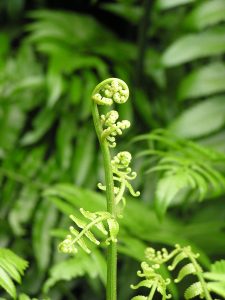Reintroducing underutilized crops to the Filipino consumers is one of the strategies that the Department of Agriculture (DA) has come up with to help the country achieve the goal of food security and self-sufficiency.
This is a huge task but not impossible to accomplish if the government continues to forge partnerships with other organizations and collaborate towards strengthening research and development (R&D) initiatives for the less appreciated food crops in the country. The academe certainly plays a big part in these endeavors particularly the state universities and colleges (SUCs) as they are better acquainted with the commodities in their localities

Cognizant of their capabilities and expertise especially in the field of agriculture and fisheries, the Bureau of Agricultural Research (BAR) has established linkages and supported the R&D endeavors of various SUCs in different parts of the country.
Among these SUCs is the Central Mindanao University (CMU), one of the premier universities in the southern part of country and is located in Bukidnon. According to the 2011 list of top performing universities released by the Commission on Higher Education, CMU was in the 8th spot. CMU offers a broad range of academic programs and excels in the fields of veterinary medicine, engineering, forestry, agriculture, nutrition and dietetics, and teacher education.
Re-discovering ferns
With the desire to promote the indigenous ferns in the country as a safe and healthy food, Dr. Victor B. Amoroso and Prof. Annabelle P. Villalobos of CMU proposed a project to BAR titled, “Establishment of pteridogarden and utilization of indigenous Mindanao edible ferns as an alternative food source.” This two-year project aims to mass propagate 10 ferns indigenous to Mindanao and promote their health and wellness properties to the public.
Thinking about it, fern is an unconventional food choice for most Filipinos. The economic value of this plant is usually associated with its use as a softscape in indoor and outdoor garden landscaping.
Fern is a pteridophyte; meaning it is a vascular plant that produces neither flower nor seeds and propagates through spores found in its fronds (leaves). It is said to be the earliest plant in the world as it its population can be traced back to over 300 million years ago. Today, there are an estimated 12, 000 fern species scattered throughout the world.
Aside from its aesthetic value, some fern species are known for their healing properties. One example is the rattlesnake fern used by Indians to treat dysentery. It is applied to snakebites, bruises, cuts and sores in the Himalayas.
The Adiantum capillus veneris is used for cough, and throat and bronchial disorder in India. The male fern root is known as a purgative aid for tapeworms and other parasites.
There are species of fern that help in agricultural productivity like the case of the mosquito fern (Azolla). It was found out that blue-green algae, which has nitrogen-fixing capability, are present in Azolla in pockets in its leaves. .
For food, ferns such as edible fern crosier, ostrich fern, lady fern, etc. can be eaten as a salad, pickled, or even cooked as leafy vegetables. In the Philippines, Diplazium esculentum, commonly known as pako, is a popular ingredient for salads and stews.
Promoting indigenous ferns of Mindanao
The CMU proponents identified 10 indigenous edible ferns of Mindanao that as the focus of the BAR-funded study. These are: Marsilea crenata (apat-apat), Pteris ensiformis (pakong-parang), Acrostichum aureum (lagolo/mangrove fern), Stenochlaena melnei (hagnaya), Diplazium esculentum (pako), Angiopteris palmiformis (pakong kalabaw/giant fern), Pteridium aquilinum (sigpang/bracken fern), Cyathea contaminans (anonotong/tree fern), Aspleniumm nidus (pugad lawin /bird’s nest), and Ceratopteris thalictroides (pakong-sungay). These identified ferns are found abundantly in Mindanao and are still used by the local people as food and medicine, yet no comprehensive data on these plants exists.
The project is composed of four components. The first component is the establishment of pteridogarden in CMU. Pteridogarden comes from two combined words pteridophyte and garden, in essence, it is both an edible and medicinal fern garden. Aside from collecting and propagating the 10 indigenous edible and medicinal species of Mindanao, theCMU researchers will develop protocols for cultivating these edible and medicinal ferns.
The second component is the determination of bioactive components such as anti-oxidants and proteins of the 10 indigenous ferns. The third component is the development of protocols on harvesting, processing and food preparation of indigenous ferns. The last component is the development of an educational program for the public on the health and wellness benefits of eating fern. This includes the production of brochures and other IEC materials for information dissemination and the conduct of seminars and training to create public awareness on utilizing fern as an alternative food source aside from its health and wellness benefits.
The proponents said that they have already built concrete structure for pteridogarden within the CMU. The garden has five rectangular boxes and one circular pond for the two aquatic species. Another pteridogarden was established in the Mt. Musuan Botanical garden for the mass propagation of the 10 indigenous ferns.
All the 10 indigenous ferns have been subjected to laboratory examination. Once results are obtained, the researchers will proceed to mass propagating and developing food processing techniques for eventual distribution to the stakeholders.
A lot more need to be done in selling to the public the goodness of ferns. BAR and CMU both hope that with this project the value of ferns will be recognized, and Filipinos will start appreciating and incorporating these indigenous ferns into their cuisine. ###
———-
For more information about the project, pelase conctact the proponenet Prof. Victor B. Amorsolo at [email protected]
References:
1. Central Mindanao University. Retrieved May 2, 2013 from Wikipedia website, en.m.wikipedia.org/wiki/Central _Mindano_Univeristy
2. Fern: importance to humans. Retrieved may 2, 2012 from Encyclopedia Brittanica website, www.britannica.com/EBchecked/topic/204819/Importance-to-humans
3. Olso, Wilbur. (1977). Fern basic. Retrieved May 2, 2013 from Los Angeles International Fern Society website, www.laifs.org/basics.html
Source: Diana Rose A. de Leon, BAR Digest January-March 2013 Issue (Vol. 15 No.1)
